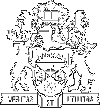|
Detailed guidelines for content and presentation style:
Content (follow in order indicated):
- What is the research question being asked in the study? Why is this an important question?
- Give brief overview of previous relevant work - just enough for rest of class to understand what motivated the study
- What are the specific hypotheses of the study?
- Describe the design of the study - indicate why the authors have included the main independent and dependent variables and how these are related to the hypotheses
- Present main results of the study
- Indicate how results support or fail to support the hypotheses of the study
- If there is more than one experiment in the study, indicate how the different experiments are related
- Discuss the theoretical and, if relevant, practical implications of the study
- Be prepared to answer questions from class and/or professor
Potential problems regarding content:
- use of technical terms that are not understood by the audience
- rushing too quickly into description of study without providing sufficient background in order to appreciate what study attempted to address
- failing to relate design of study to hypotheses (i.e. why was study designed in such a way?)
- going into too much detail about methodology and/or results
- failing to give information to understand the tasks participants of study were asked to perform
- failing to discuss theoretical significance of the results
Presentation Style:
- Speech: speak clearly, loudly enough, not too quickly, and using vocal expressiveness (avoid monotony in voice); avoid 'umms' and very casual language
- Self-Presentation: Look at audience; appear relaxed; don't fidget or remain too rigid
- Try to reduce reliance on notes as much as possible; use visual aids (for general audience) to help organize your thoughts and to remember what you need to say
- Show concern for understanding in audience: be open to questions relating to comprehension and ask, if necessary, whether explanation is clear
- Effective use of visual aids:
Remember that audience can only keep a limited amount of information in mind at once; visual aids can help to overcome potential problems with overload
Visual aids are helpful to:
- Present research question
- Show design of study
- Give examples of stimulus material / tasks
- Present results in form of graphs or tables
- Present conclusion
Be sure to make visual aids readable for audience (size, spacing, color etc)
- Pacing and timing: use comfortable pace (don't rush) but keep track of time and make sure to finish punctually
Note: Practicing your talk beforehand can be of great benefit in building up your competency, improving your style, and in reducing your anxiety!!!
|
